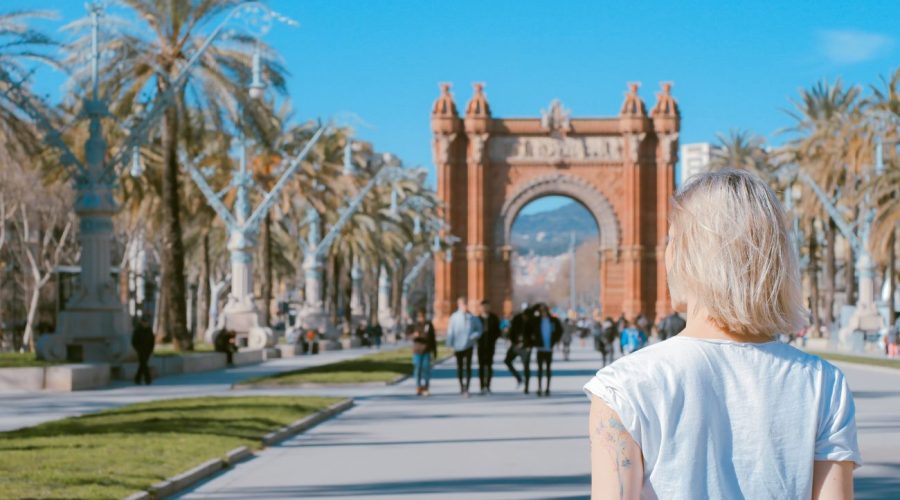The Eiffel Tower: Paris’s Most Famous Landmark
La Tour Eiffel exists among the most identifiable man-made structures across the globe although its official name remains the Eiffel Tower in Spanish. People from millions of visitors per year travel to Paris to admire this famous landmark symbol. This piece examines the complete history of the Eiffel Tower in addition to its architectural design and its collection of fascinating facts.
History of the Eiffel Tower
The Eiffel Tower project emerged under the leadership of engineer Gustave Eiffel when France planned to hold the 1889 Exposition Universelle (World’s Fair) for commemorating the 100th anniversary of the French Revolution. A public invitation for designing an iron elevator tower emerged from the French government to dominate Paris during the exhibition. A successful entry for the winning design came from engineer Gustave Eiffel.
The entire tower building process started in 1887 and finished after two years. Construction took 300 workers and 18,000 iron pieces created by their collective efforts to complete the operation in two years. The public inauguration of the tower happened on March 31, 1889 before it experienced immediate widespread popularity.
Architecture and Design
With its antenna included the Eiffel Tower extends its height to 330 meters (1,083 feet). When completed in 1889 the Eiffel Tower took the position as the highest human-made structure in the world beyond the Washington Monument. It remained king of the world’s tallest structures until businesses built the Chrysler Building in New York City.
Trying to serve both functionality and design aesthetics the iron lattice structure offers its unique architectural composition. The facilities found throughout the tower arrange themselves over three accessible levels with separate sights that visitors can experience. People can reach every level through elevators and staircases and the view from the top floor reveals a breathtaking entire landscape of Paris.
Level 1
Shops and restaurants together with theater performances are among the attractions located on the first level of the Eiffel Tower. Visitors can eat their meals or have snacks while they appreciate outstanding vistas from this elevation. You can relish the fear of heights by standing on the glass floor section at this location.
Level 2
Beyond Level 2 visitors can reach an open observation point which gives breathtaking city views. Notre-Dame Cathedral stands alongside the Louvre Museum and Montmartre alongside other famous landmarks which you can see from this specific viewing spot. Several telescope systems are in place for viewers to see distant details.
Level 3
The final accessible floor of the Eiffel Tower stands at level 3. People can observe Paris along with its surrounding land from this position. A clear day permits viewing of Sacré-Cœur Basilica so far away in addition to the flowing Seine River across the city.
Interesting Facts about the Eiffel Tower
- The Eiffel Tower underwent a change in fate when it survived destruction because it gained increasing fame while operating as a radio transmission center.
- World War I saw the Eiffel Tower intercept enemy radio signals which provided critical support to the French war operations.
- Since its opening many courageous performers have used the Eiffel Tower as their stage for performing daring stunts like tightrope balancing and bungee jumping.
- Painters maintain the Eiffel Tower every seven years to stop its oxidation process. The complete painting coverage of the tower requires 60 tons of paint.
- The Eiffel Tower has received 300 million people since it launched to the public.
Visiting the Eiffel Tower
Before visiting the Eiffel Tower you must plan ahead to ensure a fulfilling visit. Here are a few tips:
- Buy your tickets beforehand to stay away from extended waiting lines. Internet ticket reservations enable visitors to avoid waiting in queues completely.
- The stairs offer a challenging route for visitors who select them over elevators particularly affecting those with difficulties using stairs. The elevation system is available for people needing it.
- Schedule your Eiffel Tower visit during weekdays or during unpopped hours to find a calm environment among smaller visitor numbers.
- Take a portable dinner with you to have lunch on any of the different levels. Standing at the Eiffel Tower observation area with a picnic serves as an unforgettable method to see Paris from above.
- See the Eiffel Tower from morning to evening to experience the daily and evening Canadian atmosphere of Paris.
Standing at the Eiffel Tower brings an astonishing viewpoint to one of planet Earth’s prettiest destinations. The famous monument offers unforgettable experiences in its unique way through architecture and historical importance and its awe-inspiring vistas.
Table of Contents



